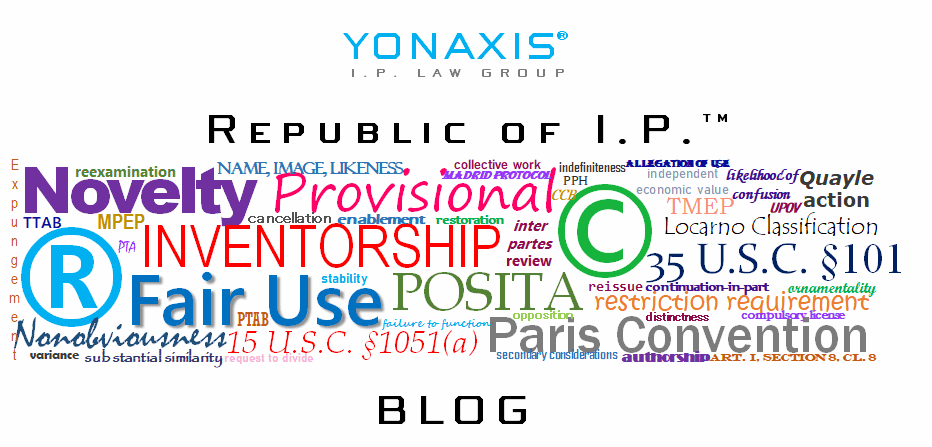As of February 14, 2018, at last count, there have been six substantive opinions rendered by the Court of Appeals for the Federal Circuit relating to 35 U.S.C. §101, creating an unusually large body of §101 jurisprudence within only six weeks of the calendar year. Two of these opinions, Move, Inc. v. RE/MAX Int’l, Inc., …
Category: patent
Fed Circuit Watch: Distribution Agreement Is Offer for Sale for On-Sale Bar Analysis
On February 6, 2018, an interesting ruling was handed down by the Court of Appeals for the Federal Circuit. In The Medicines Co. v. Hospira, Inc.,[1] the Fed Circuit held that a distribution agreement could constitute an on-sale bar for purposes of §102 invalidation. This appeal is a further remand of an earlier en …
IP Practicum: Failure to Check Box on USPTO Form Can Affect Patent Term
On February 6, 2018, the Court of Appeals for the Federal Circuit ruled in Actelion Pharm., Ltd. v. Matal.[1] This case deals with the sometimes mundane aspects of filling out the proper forms required for filing with the USPTO, and failure to do so can have major impacts downstream during and post-prosecution. The facts of …
Fed Circuit Watch: Pre-Institution Disclaimer Creates Estoppel for Patent Owner
On January 24, 2018, the Court of Appeals for the Federal Circuit ruled on Arthrex, Inc. v. Smith & Nephew, Inc.,[1] holding that the patent owner’s pre-IPR-institution statutory disclaimer resulting in an adverse judgment has the effect of estoppel against the patent owner. The facts are as follows. Smith & Nephew filed an IPR against …
Fed Circuit Watch: Improved Smartphone Display Interface Found Patent-Eligible
On January 25, 2018, the Court of Appeals for the Federal Circuit ruled claims directed to improved display interface for cell phones was patent-eligible under 35 U.S.C. §101 in Core Wireless Licensing S.a.r.l. v. LG Electronics, Inc.[1] This case represents the second precedential one of the year where claims have been found patent-eligible by a …
Fed Circuit Watch: Improper Patent Assignment Dooms Standing to Sue for Infringement
On January 11, 2018, the Court of Appeals for the Federal Circuit ruled on the Advanced Video Technology, LLC v. HTC Corp., case.[1] This case is a unique one dealing with the logistics of a patent assignment document, and the proper mechanisms to effect a proper transfer of rights. Absent these things, and the party …
Fed Circuit Watch: Gaming of Patent System Cannot Save Patent from Invalidation on Double Patenting Grounds
On January 23, 2018, the United States Court of Appeals for the Federal Circuit handed down In re Janssen Biotech, Inc.,[1] which dealt with the specific issue of the double patenting safe harbor under 35 U.S.C. §121.[2] This case is an example of playing games with the patent prosecution system in order to better position …
McAward as Precedential and Lower Standard for Indefiniteness During Prosecution
Way back on August 25, 2017, the U.S. Patent and Trademark Office designated Ex parte McAward[1] as precedential authority for defining the USPTO and the PTAB’s policy on assessing indefiniteness as defined under 35 U.S.C. §112(b)[2] during prosecution. However, McAward does not so much define the USPTO’s rules on indefiniteness but rather reasserts its position …
How a Government Shutdown Will Affect the USPTO
Many of us patent practitioners like to think we are somewhat immune to politics, but unfortunately that is not always the case. As the threat of a government shutdown looms later today, January 19, 2018, there were questions on its affect on the operations of the United States Patent and Trademark Office. On December 7, …
Fed Circuit Watch: Helsinn Redux: En Banc Denied
On January 16, 2018, in a non-precedential per curiam order (the order was not published, but was made available from our colleagues at the Patently-O blog), the United States Court of Appeals for the Federal Circuit issued an order denying Helsinn’s petition for rehearing and en banc rehearing. Judge O’Malley, a member of the original …
